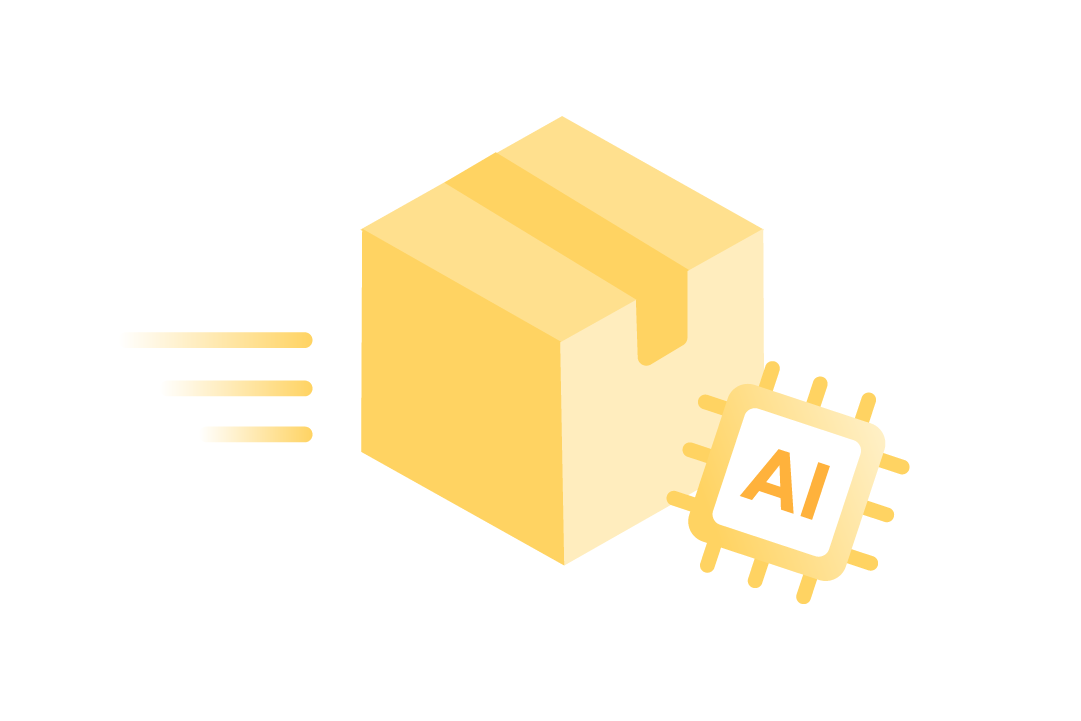Artificial Intelligence (AI) is changing how we manage logistics and transport. It helps companies take fewer risks and spend less money on running their fleets. Now, more than 90% of companies are using AI or planning to improve how they handle their products and deliveries using the technology.
If you want to fully tap into what AI can do for your business, you’re in the right place. This article will show you how AI can upgrade your shipping and delivery services, and we’ll talk about why it’s a smart move to start using AI in your operations.
Understanding AI in Logistics and Transportation
Artificial Intelligence (AI) acts as a digital brain, enabling machines to perform complex tasks without human help. It brings intelligent, automated solutions to various sectors, including the transport and logistics industry.
In logistics, AI is tackling jobs like improving security, optimizing routes, and predicting product demand. It uses algorithms and machine learning to streamline and automate the operations of supply chains, making them more efficient. The rise of e-commerce, which hit over $1 trillion in the US in 2022, has transformed the logistics industry. Companies now need to be more efficient than ever to meet growing customer demands and manage the peaks and troughs of shopping seasons.
AI fits perfectly in this sector with its complex networks. By analyzing data, AI can forecast future needs for production and transport, which leads to smarter use of resources. Consequently, more and more logistics tasks are now being handled by these intelligent, self-learning systems.
Key Challenges Addressed by AI
The logistics and transportation sectors face several key challenges that can hinder their efficiency and profitability. Here are some of the prominent issues:
Rising Operational Costs. The logistics and transportation industry is grappling with increasing fuel prices and inefficient route planning. These factors, along with unexpected road incidents, pile on the operational costs, affecting a company’s competitive edge.
The Problem of Empty Miles. A significant concern is ’empty miles’ — trucks traveling without cargo. This is a substantial inefficiency, almost like wasting money. Fortunately, AI has the potential to reduce these empty miles dramatically by as much as 64%, thereby saving money and time for the business.
Complex Fleet Management. For com64%, leading to a 23% reduction with extensive fleets, limited maintenance resources can lead to sudden breakdowns and costly interruptions. This is particularly challenging for growing companies where expansion can lead to back-office inefficiencies.
Lack of Real-time Truck Tracking. Without real-time vehicle tracking, businesses can’t maximize fuel efficiency, optimize routes, or dispatch effectively. Real-time tracking ensures that vehicles maintain proper speeds and minimize fuel usage, while also increasing the number of jobs completed each day.
How AI Optimizes Logistics and Transporation
AI presents a promising solution to the challenges plaguing the logistics and transportation industry. By leveraging artificial intelligence, your organization can achieve higher efficiency, cost savings, and improved customer satisfaction.

Route Optimization. AI algorithms can analyze real-time traffic data, weather conditions, and historical traffic patterns to suggest the most efficient routes for your vehicles. This can help you avoid traffic congestion and minimize delays, which can save you money on fuel costs and reduce delivery times. For example, Amazon uses AI-powered route optimization to ensure timely deliveries, which helps them achieve faster shipping speeds and higher customer satisfaction.
Reducing Empty Miles. AI can help to match empty return trips with suitable cargo loads, which can minimize the problem of empty miles. This can lead to significant cost savings and a reduced environmental impact. A good example is Uber Freight which uses AI to match shippers with available carriers, reducing empty miles and making the transportation process more efficient.
Demand Forecasting: AI algorithms can analyze historical data and real-time information to accurately predict demand for your products. This helps in maintaining optimal inventory levels, reducing overstocking and out-of-stock situations, and ensuring you meet customer demands efficiently. Improved demand prediction accuracy can help manufacturers, warehouses, and retailers save money and improve customer satisfaction.
Fleet Maintenance and Predictive Analysis. AI-powered predictive maintenance can identify potential issues before they cause costly breakdowns. By analyzing data from sensors and vehicle diagnostics, AI can schedule maintenance, reducing unplanned downtime and keeping your fleet running smoothly. DHL, for instance, uses AI-powered predictive maintenance to monitor the health of their vehicles and prevent unexpected breakdowns, resulting in a 10% reduction in maintenance costs and a 15% reduction in vehicle downtime.
Real-time Tracking. Real-time tracking systems powered by AI provide visibility into the movements of your entire fleet. This allows you to make informed decisions, optimize routes on the fly, and ensure that your vehicles are operating at peak efficiency. FedEx is a great example of this, as they use AI-enabled tracking solutions to monitor their vehicles, optimize delivery schedules, and minimize fuel consumption.
Real-Time Pricing. Real-time pricing is a dynamic pricing strategy that adjusts prices based on factors such as demand, supply, competitor prices, and related product prices. It uses machine learning algorithms to analyze historical customer data in real time. This enables businesses to respond more swiftly to fluctuations in demand by adapting their prices accordingly.
Enhanced Security. AI-powered security systems can detect anomalies in cargo and monitor vehicle activity, reducing the risk of theft and ensuring the safety of goods in transit.
Streamlining Document Processing. Document automation technologies can enhance the efficiency of processing documents like invoices, bills of lading, and rate sheets. Automation can take care of data input, error reconciliation, and document processing, simplifying the entire process.
Automating Various Back-Office Functions. Hyperautomation combines AI, robotic process automation (RPA), process mining, and other technologies that automate back-office tasks. It can handle a range of functions, such as scheduling and tracking, report generation, and email processing.

Customer Service Chatbots. Customer service chatbots can help logistics companies handle tasks like delivery requests, order amendments, shipment tracking, and responding to frequently asked questions. Chatbot analytics metrics can also provide valuable insights into customer experiences, which can help businesses improve their customer journeys.
The Role of AI in Supply Chain Management
Quality AI software benefits businesses across the logistics and transportation sectors. Let’s review the key benefits of integrating AI into business processes in the industry.
Enhancing Data Quality. AI improves logistics by enhancing data quality. It does this by accurately collecting and organizing data, using natural language processing (NLP) to process terms, phrases, and industry jargon, and ML to connect data points and learn as language evolves. This improves the accuracy of data and makes it more valuable for decision-making.
By leveraging AI’s capabilities for enhancing global connectivity and optimizing data utilization, logistics companies can reduce risks and find efficient solutions. This, in turn, leads to lower costs, increased data authenticity, and better data consolidation.
Improving Predictive Analytics. In the past, logistics planners relied on manual methods to assess operations. However, in today, AI and predictive analytics are used to handle logistics processes more efficiently and effectively. AI incorporates relevant external factors to predict upcoming demands, which can help logistics companies stay ahead of the demand curve and reduce unnecessary costs.
More Accurate Logistics Forecasting. AI is expected to increase logistics productivity by more than 40% by 2035, according to an Accenture report. This is because the technology can access multiple databases to predict demand, allowing logistics companies to route rail and vehicles more efficiently, optimize storage, and avoid bottlenecks. This is especially valuable in today’s chaotic transportation industry.
Better Longhaul and Product Delivery Planning. In 2021 alone, e-commerce growth led to a 24.3% increase in parcel and long-haul transportation. AI can help logistics companies improve efficiency and service levels by predicting potential disruptions and planning around them. This is especially important for delivery planning, the final leg of a shipment’s journey. By leveraging AI, logistics companies can deliver goods faster and reliably, giving them a competitive advantage.
Final Thoughts
As global trade grows, customers want things faster and more reliably. For transport and logistics, this means it’s crucial to use the latest tech to keep things moving smoothly and stay ahead. AI is a big part of this, helping to make deliveries quicker and supply chains smarter. By adding AI to your business, you can keep up with the world’s fast pace and meet your customers’ needs better.







